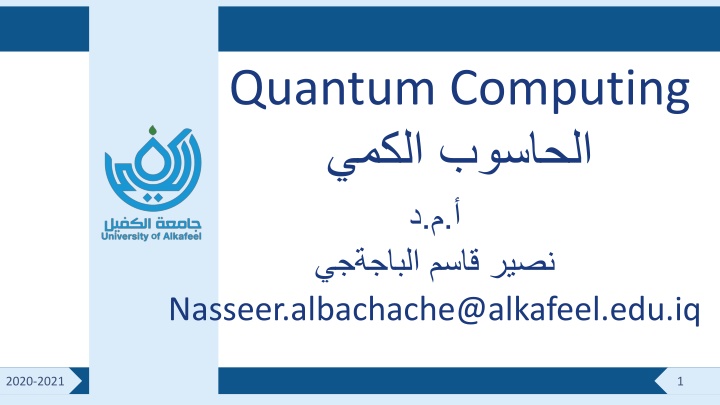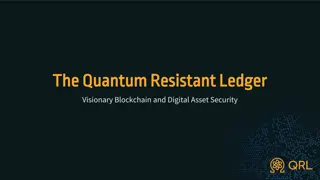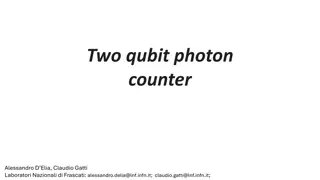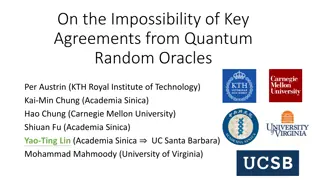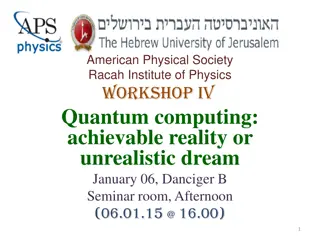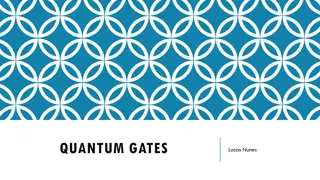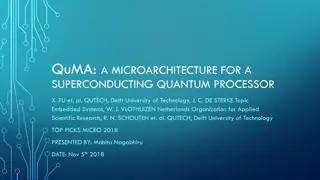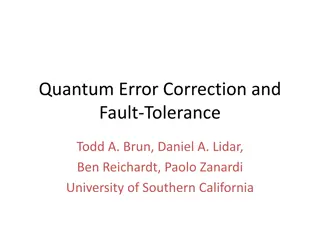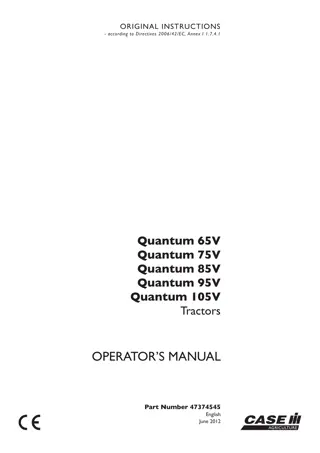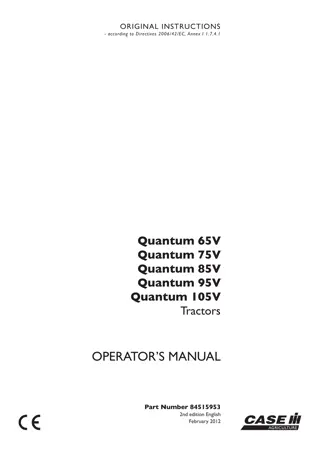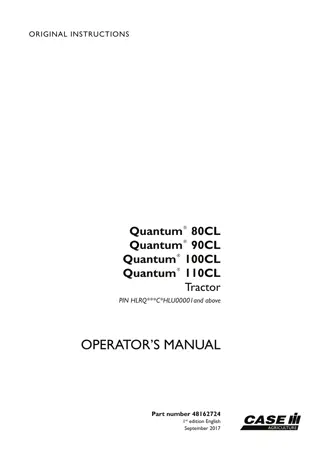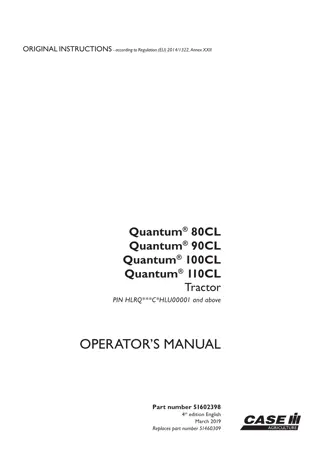Quantum Computing
Quantum Computing is a groundbreaking field utilizing quantum mechanical phenomena to revolutionize data operations. This technology offers exponential storage and processing capabilities, challenging the limitations of classical computation. Explore the immense potential and transformative power of Quantum Computing in addressing high complexity problems and enhancing computational efficiency.
Download Presentation

Please find below an Image/Link to download the presentation.
The content on the website is provided AS IS for your information and personal use only. It may not be sold, licensed, or shared on other websites without obtaining consent from the author.If you encounter any issues during the download, it is possible that the publisher has removed the file from their server.
You are allowed to download the files provided on this website for personal or commercial use, subject to the condition that they are used lawfully. All files are the property of their respective owners.
The content on the website is provided AS IS for your information and personal use only. It may not be sold, licensed, or shared on other websites without obtaining consent from the author.
E N D
Presentation Transcript
Quantum Computing . . Nasseer.albachache@alkafeel.edu.iq 2020-2021 1
{ { 85 2020-2021 2 Email :info@alkafeel.edu.iq Website :http://Alkafeel.edu.iq
Introduction Quantum Computer A computer that uses quantum mechanical phenomena to perform operations on data through devices such as superposition and entanglement. Classical Computer (Binary) A computer that uses voltages flowing through circuits and gates, which can be calculated entirely by classical mechanics. 2020-2021 3 Email :info@alkafeel.edu.iq Website :http://Alkafeel.edu.iq
What is a Quantum Computer? Quantum Computation is becoming a viable alternative for: High complexity problems Too hard to address in classical computation, with or without acceleration. Represents an important change of paradigm. Quantum Computation will be introduced at a conceptual level. Concept of quantum bit, or qubit, affords for an enormous information storage and processing capacity. 2020-2021 4 Email :info@alkafeel.edu.iq Website :http://Alkafeel.edu.iq
The Need For Speed Classical Digital Computer Moore s Law: # of transistors on chip doubles every 18 months microprocessor circuits will measure on atomic scale by 2020-2030 Downscaling of circuit board layout/components is leading to discrepancies. Copper traces are actually crystallizing and shorting out! Emergence of quantum phenomena such as electrons tunneling through the barriers between wires. Serial Processing one operation at a time 64-bit classical computer operates speeds measured in gigaflops (billions of floating-point operations per second). 2020-2021 5 Email :info@alkafeel.edu.iq Website :http://Alkafeel.edu.iq
The Need For Speed Quantum Computer Harnesses the power of atoms and molecules to perform memory and processing tasks Parallel Processing millions of operations at a time 30-qubit quantum computer equals the processing power of conventional computer that running at 10 teraflops (trillions of floating-point operations per second). Google has demonstrated that there are particular problems that can be solved efficiently on a quantum computer, while demanding prohibitively high resources in classical computation. 2020-2021 6 Email :info@alkafeel.edu.iq Website :http://Alkafeel.edu.iq
Quantum Computing Power Integer Factorization Impossible for digital computers to factor large numbers which are the products of two primes of nearly equal size Quantum Computer with 2n qubits can factor numbers with lengths of n bits (binary) Quantum Database Search Example: To search the entire Library of Congress for one s name given an unsorted database... Classical Computer 100 years Quantum Computer second 2020-2021 7 Email :info@alkafeel.edu.iq Website :http://Alkafeel.edu.iq
Quantum Computing History 1973 - Alexander Holevo publishes paper showing that n qubits cannot carry more than n classical bits of information. 1976 - Polish mathematical physicist Roman Ingarden shows that Shannon information theory cannot directly be generalized to the quantum case. 1981 - Richard Feynman determines that it is impossible to efficiently simulate a evolution of a quantum system on a classical computer. 1985 - David Deutsch of the University of Oxford, describes the first universal quantum computer 1993 - Dan Simon, at University de Montreal, invents an oracle problem for which quantum computer would be exponentially faster than conventional computer. This algorithm introduced the main ideas which were then developed in Peter Shor's factoring algorithm. 1994 - Peter Shor, at AT&T's Bell Labs discovers algorithm to allow quantum computers to factor large integers quickly. Shor's algorithm could theoretically break many of the cryptosystems in use today. 1995 - Shor proposs the first scheme for quantum error correction. 1996 - Lov Grover, at Bell Labs, invents quantum database search algorithm. 2020-2021 8 Email :info@alkafeel.edu.iq Website :http://Alkafeel.edu.iq
Quantum Computing History 1997 - David Cory, A.F. Fahmy, Timothy Havel, Neil Gershenfeld and Isaac Chuang publish the first papers on quantum computers based on bulk spin resonance, or thermal ensembles. Computers are actually a single, small molecule, storing qubits in the spin of protons and neutrons. Trillions of trillions of these can float in a cup of water. 1998 - First working 2-qubit NMR computer demonstrated at University of California, Berkeley. 1999 - First working 3-qubit NMR computer demonstrated at IBM's Almaden Research Center. First execution of Grover's algorithm. 2000 - First working 5-qubit NMR computer demonstrated at IBM's Almaden Research Center. 2001 - First working 7-qubit NMR computer demonstrated at IBM's Almaden Research Center. First execution of Shor's algorithm. The number 15 was factored using 1018 identical molecules, each containing 7 atoms. 2020-2021 9 Email :info@alkafeel.edu.iq Website :http://Alkafeel.edu.iq
Quantum Computer Applications Quantum Mechanics Simulations physics, chemistry, materials science, nanotechnology, biology and medicine. Computer can compute millions of variables at once. All are limited today by the slow speed of quantum mechanical simulations. Cryptoanalysis Capable of cracking extremely complicated codes RSA encryption Typically uses numbers with over 200 digits 2020-2021 10 Email :info@alkafeel.edu.iq Website :http://Alkafeel.edu.iq
Quantum Machine Learning 2020-2021 11 Email :info@alkafeel.edu.iq Website :http://Alkafeel.edu.iq
Candidates for Quantum Computers Superconductor-based quantum computers (including SQUID-based quantum computers) Ion trap-based quantum computers "Nuclear magnetic resonance on molecules in solution"-based Quantum dot on surface"-based Laser acting on floating ions (in vacuum)"-based (Ion trapping) "Cavity quantum electrodynamics" (CQED)-based Molecular magnet-based Fullerene-based ESR quantum computer Solid state NMR Kane quantum computer 2020-2021 12 Email :info@alkafeel.edu.iq Website :http://Alkafeel.edu.iq
Quantum Computing Problems Current technology 40 Qubit operating machine needed to rival current classical equivalents. Errors Decoherence - the tendency of a quantum computer to decay from a given quantum state into an incoherent state as it interacts with the environment. Interactions are unavoidable and induce breakdown of information stored in the quantum computer resulting in computation errors. Error rates are typically proportional to the ratio of operating time to decoherence time operations must be completed much quicker than the decoherence time. 2020-2021 13 Email :info@alkafeel.edu.iq Website :http://Alkafeel.edu.iq
Postulates of Quantum Mechanics An important distinction needs to be made between quantum mechanics, quantum physics and quantum computing. Quantum mechanics is a mathematical language. There are four postulates to quantum mechanics, which will form the basis of quantum computers: 1: Definition of a quantum bit, or qubit. 2: How qubit(s) transform (evolve). 3: The effect of measurement. 4: How qubits combine together into systems of qubits. 2020-2021 14 Email :info@alkafeel.edu.iq Website :http://Alkafeel.edu.iq
1 Quantum bit, or qubit Associated to any isolated physical system is a complex vector space with inner product (i.e. a Hilbert space) known as the state space of the system. The system is completely described by its state vector, which is a unit vector in the system s state space. Quantum Bit (Qubit) 2 Basic states ket 0, ket 1: Superposition of both states (not continuous in nature) Quantum entanglement 2 or more objects must be described in reference to one another Entanglement is a non-local property that allows a set of qubits to Pure Quibit State: |0 where , a b = + |1 a b 2 2 = + s.t. 1 a b 8 Possible States per Qubit express superposition of different binary strings (01010 and 11111, for example) simultaneously 2020-2021 15 Email :info@alkafeel.edu.iq Website :http://Alkafeel.edu.iq
Quantum 2020-2021 16 Email :info@alkafeel.edu.iq Website :http://Alkafeel.edu.iq
2 Evolution of quantum systems The evolution of a closed quantum system is described by a unitary transformation. That is, the state I > of the system at time t1 is related to the state of I < of the system at time t2 by a unitary operator U which depends only on times t1& t2 2020-2021 17 Email :info@alkafeel.edu.iq Website :http://Alkafeel.edu.iq
Measurement Quantum measurements are described by a collection (M0,1) of measurement operators. These are operators acting on the state space of the system being measured. The index m refers to the measurement outcomes that may occur in the experiment. If the state of the quantum system is immediately before the measurement then the probability that result M occurs is given by: 2020-2021 18 Email :info@alkafeel.edu.iq Website :http://Alkafeel.edu.iq
Multi-qubit systems The state space of a composite physical system is the tensor product of the state spaces of the component physical systems. [sic] e.g. suppose systems 1 through n and system i is in state i, then the joint state of the total system is j 2020-2021 19 Email :info@alkafeel.edu.iq Website :http://Alkafeel.edu.iq
Why the tensor product? This is not a proof, but one would expect some way to describe a composite system. Tensor product works for classical systems (except the restricted definition of the probability amplitudes makes it so that the result is a simple concatenation). For quantum systems tensor product captures the essence of superposition. that is if system A is in state IAI and B in state IBI then There should be some way to have a little of A and a little of B. Tensor product exposes this. 2020-2021 20 Email :info@alkafeel.edu.iq Website :http://Alkafeel.edu.iq
References http://www.qubit.org http://www.cs.caltech.edu/~westside/quantum-intro.html http://computer.howstuffworks.com/quantum-computer1.htm http://en.wikipedia.org/wiki/Quantum_computers http://www.carolla.com/quantum/QuantumComputers.htm 2020-2021 21 Email :info@alkafeel.edu.iq Website :http://Alkafeel.edu.iq
Thank you ? ? ? 2020-2021 22 Email :info@alkafeel.edu.iq Website :http://Alkafeel.edu.iq
